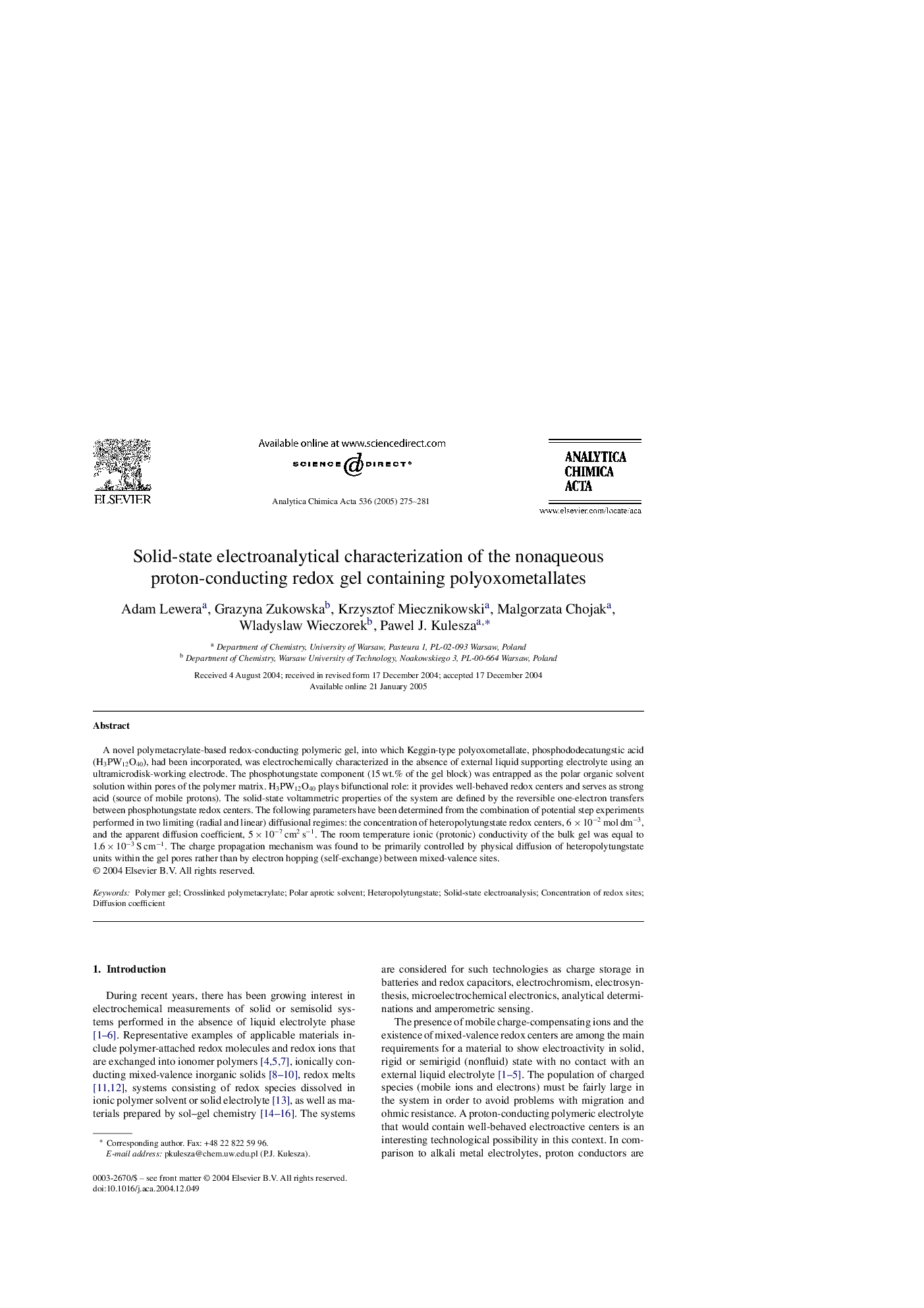| Article ID | Journal | Published Year | Pages | File Type |
|---|---|---|---|---|
| 9743850 | Analytica Chimica Acta | 2005 | 7 Pages |
Abstract
A novel polymetacrylate-based redox-conducting polymeric gel, into which Keggin-type polyoxometallate, phosphododecatungstic acid (H3PW12O40), had been incorporated, was electrochemically characterized in the absence of external liquid supporting electrolyte using an ultramicrodisk-working electrode. The phosphotungstate component (15 wt.% of the gel block) was entrapped as the polar organic solvent solution within pores of the polymer matrix. H3PW12O40 plays bifunctional role: it provides well-behaved redox centers and serves as strong acid (source of mobile protons). The solid-state voltammetric properties of the system are defined by the reversible one-electron transfers between phosphotungstate redox centers. The following parameters have been determined from the combination of potential step experiments performed in two limiting (radial and linear) diffusional regimes: the concentration of heteropolytungstate redox centers, 6 Ã 10â2 mol dmâ3, and the apparent diffusion coefficient, 5 Ã 10â7 cm2 sâ1. The room temperature ionic (protonic) conductivity of the bulk gel was equal to 1.6 Ã 10â3 S cmâ1. The charge propagation mechanism was found to be primarily controlled by physical diffusion of heteropolytungstate units within the gel pores rather than by electron hopping (self-exchange) between mixed-valence sites.
Related Topics
Physical Sciences and Engineering
Chemistry
Analytical Chemistry
Authors
Adam Lewera, Grazyna Zukowska, Krzysztof Miecznikowski, Malgorzata Chojak, Wladyslaw Wieczorek, Pawel J. Kulesza,
